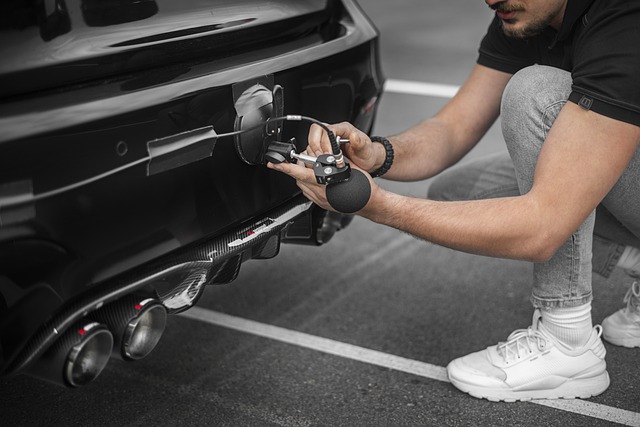Vehicle registration involves distinct processes for replacements and transfers, requiring specific documents, fees, and in-person visits. States have varying guidelines, so check local DMVs for accurate requirements. Technology enhances urban planning with data analysis, 3D modeling, and smart city tools, optimizing resource allocation and development. For seamless vehicle registration, gather essential documents, complete online forms, and track applications digitally to avoid delays. Proactive preparation ensures a smooth transition when transferring or replacing vehicle ownership.
- Understanding Vehicle Registration Needs
- Digital Applications: A Game Changer
- Requirements for Replacement or Transfer
- Navigating the Process Effortlessly
- Benefits of Digital Vehicle Registration
- Tips for a Smooth Transition
Understanding Vehicle Registration Needs

When it comes to vehicle registration, understanding your specific needs is the first step. Whether you’re replacing a lost or damaged registration or transferring ownership, each scenario has its own set of requirements. For instance, if you’re dealing with a replacement, you’ll need to provide proof of identity and ownership, such as a valid driver’s license and vehicle title. Additionally, some states may require evidence of insurance or a recent emissions test.
On the other hand, during a transfer, both the current and new owner must be present at the DMV. Both parties will need to fill out forms, provide identification documents, and possibly pay fees. It’s essential to check with your local DMV for specific guidelines as requirements can vary by state and even within different regions of the same state. By being prepared and familiarizing yourself with these needs, you can streamline the process and ensure a smooth transition.
Digital Applications: A Game Changer

Requirements for Replacement or Transfer

To initiate the replacement or transfer process, ensure you have the necessary documents and meet specific criteria. For a replacement vehicle registration, you’ll typically require proof of insurance, a valid driver’s license, and the vehicle’s current registration details. If you’re transferring ownership, additional paperwork such as a Bill of Sale or a notarial certificate may be needed to verify the change. It’s crucial to check with your state’s DMV for precise requirements, as documentation needs can vary.
Before applying, gather all essential documents, including any proof of identity and vehicle-related records. The process often involves filling out specific forms available on the DMV’s official website or through their mobile app, ensuring accurate information is provided to expedite the replacement or transfer request.
Navigating the Process Effortlessly

Navigating the process effortlessly starts with understanding your state’s specific requirements for vehicle registration replacement or transfer. Many DMVs now offer digital applications that streamline these tasks, making them easier than ever. Simply visit your state’s official DMV website to access the online forms and guides.
Once you’ve gathered the necessary documents—such as proof of ownership, identification, and any fees—you can fill out the application and submit it electronically. This approach not only saves time but also reduces potential errors caused by paper forms. Plus, digital solutions often provide real-time updates on the status of your request, allowing you to track progress and avoid unnecessary delays.
Benefits of Digital Vehicle Registration

Tips for a Smooth Transition

When transitioning to a new vehicle or transferring your registration, preparation is key. Start by gathering all necessary documents, including proof of ownership, valid identification, and any relevant insurance information. Digital platforms often require specific formats for document uploads, so ensure your papers are organized and easily accessible in digital copies.
Create a checklist to stay organized during the process. This will help you keep track of required actions, deadlines, and any additional documentation needed by your state’s DMV. By being proactive and well-prepared, you can make the registration transition smoother and reduce potential delays caused by missing information or paperwork errors.
In today’s digital age, navigating vehicle registration processes no longer has to be cumbersome. By utilizing state-provided online applications, individuals can efficiently manage replacement and transfer needs, eliminating lengthy in-person visits. Understanding the requirements and embracing these technological advancements ensures a seamless experience, allowing you to hit the road worry-free.



